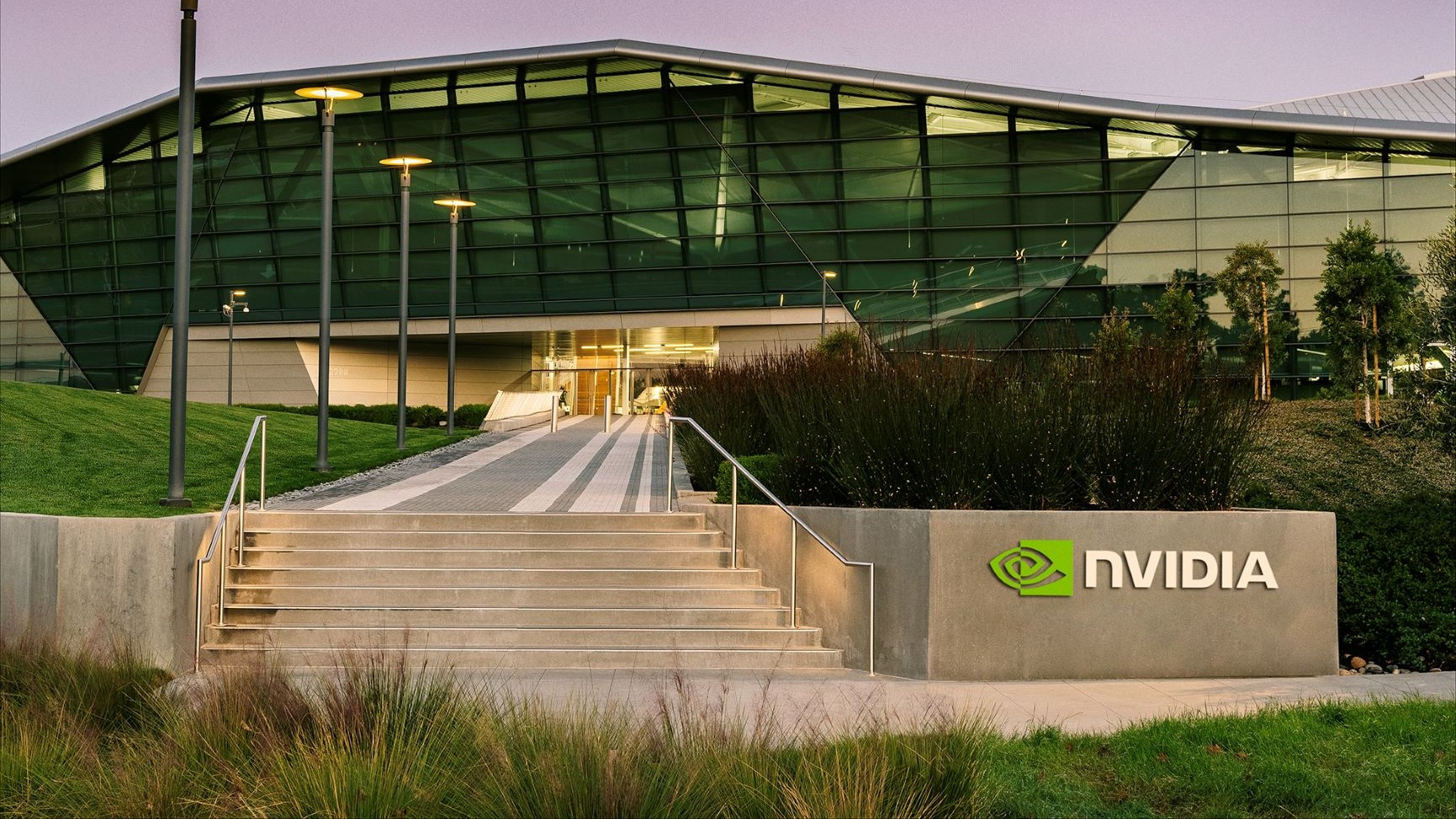Could Nvidia stock reach $300 in the next few years? Does this sound ridiculous? Consider this, less than nine months ago, at the end of December 2023, Nvidia stock was trading at around $50 levels. This year the stock has grown over 2.5x and trades at close to $128 presently. Nvidia stock trades at about 75x trailing earnings. Is this pricey? Not at all. Especially if you consider the fact that the company’s earnings could be about 4x the current level in the next few years.
If Nvidia grows its sales at an average annual rate of over 60% for the next 3 years - its revenues could move from around $61 billion in FY’24 to around $250 billion by FY’27 or over 4x. For context, Nvidia’s revenues grew by close to 3x over the last 12 months, while notching an average annual growth rate of about 55% over the last three years. These growth rates could hold up, given the surge of demand for Nvidia’s high-end graphics chips, which have emerged as the defacto silicon for running artificial intelligence applications. The lure of AI is growing each day, and the demand for chips isn’t fading yet.
While initial AI models unveiled by the likes of OpenAI were largely text-based, models are increasingly multimodal, working with speech, images, video, and 3D calling for higher computing power and a larger number of GPU shipments. Moreover, sectors as diverse as energy to real estate, healthcare and medical equipment, and industrial robots are looking to leverage AI tech as an input that can help these companies win.
To put things in perspective, NVDA stock swelled 900% from levels of $13 in early January 2021 to around $130 now, vs. an increase of about 50% for the S&P 500 over this roughly 4-year period. It was a bumpy ride, with returns for the stock being 125% in 2021, -50% in 2022, and 239% in 2023. The underperformance in NVDA’s stock vs. the S&P 500 in 2022 stands out in particular - as the benchmark index had returns of -19% that year. Notably, the Trefis High Quality Portfolio, with a collection of 30 stocks, has outperformed the S&P 500 each year over the same period.
But there is more to the story this time around. Let’s take the case of Eli Lilly - the maker of the weight loss drug Wegovy. Like all companies, Lilly uses electricity as an input in its factories and offices. Clearly, Lilly doesn’t expect to win against a rival such as Pfizer because it uses more electricity. Now AI is fast becoming a core input for companies across sectors, just like electricity. But with an important difference. Lilly believes that leveraging AI in its R&D will help develop better products, faster than the competition. Unlike more electricity, more AI will help Lilly win in the marketplace. This changes everything. It implies Lilly will want to invest in AI. Aggressively. With little concern about price, it will be willing to pay for better, faster chips from companies like Nvidia. Nvidia is in a rare position of producing something where the demand seems limitless. Limitless, across sectors and industries. And this isn’t going away soon.
Combine this solid revenue growth with the fact that Nvidia’s margins (net income, or profits after all expenses and taxes, calculated as a percent of revenues) are on an improving trajectory - they grew from levels of about 25% in FY’19 to about 49% in FY’24 as the company sees better economies of scale and a more favorable product mix skewed toward complex data center products. Software-related sales are also trending higher. We can assume that margins will remain flat at current levels as Nvidia’s launch of pricier higher-end products such as the Blackwell chips are offset by potential competitive pressures.
So is 4x growth in earnings possible? Sure. Looks quite reasonable when you combine 4x revenue growth with potentially flat margins over the next few years. Now if earnings grow 4x, the PE multiple will shrink by 4 times, assuming the stock price stays the same! But that’s exactly what Nvidia investors are betting will not happen. If earnings expand 4-fold over the next few years, instead of PE shrinking from a figure around 75x now to about 19x, a scenario where the PE metric stays at about 40x to 45x looks quite likely. This would make a 2.5x growth in Nvidia stock price to levels of about $300 a real possibility.
What about the time horizon for this high-return scenario? In practice, it won’t make much difference whether it takes 3 years or 5, as long as Nvidia is on this revenue expansion trajectory, with margins holding up, the stock price could respond similarly. And it could be a bumpy ride yet again. While there is definitely a case to be made for large long-term gains from NVDA stock, the Trefis High Quality Portfolio could be right up your alley if consistent outperformance is at the top of your list.
Nvidia’s stock has skyrocketed by 150% this year alone, with a 3,000% surge over the past five years. Current shipment issues are not expected to hamper Nvidia’s results and Green believes the company’s GPUs, particularly its Hopper architecture are driving massive demand, with no clear competitor in sight. “The result? A stratospheric rise in Nvidia’s stock and market cap that has far outpaced broader market gains.” He said: “The company has become the undisputed leader in artificial intelligence (AI) chips, a market segment that is poised to reshape industries across the globe. In a world increasingly dominated by AI-driven technologies, Nvidia stands head and shoulders above the competition.
The earnings report later today will come after markets close and could be a defining moment for the US markets. “With Nvidia accounting for roughly a quarter of the S&P 500’s 17% gain year-to-date, all eyes are on whether the AI darling can continue its impressive streak,” notes the deVere Group CEO. “We believe Nvidia will deliver stellar results, outperforming both earnings expectations and forward guidance.”
Furthermore, Nvidia’s key customer Meta Platforms (META) has just raised its capital expenditure guidance by billions in the coming years, signalling confidence in the long-term demand for Nvidia’s AI chips. While some sceptics argue that Nvidia’s gains will inevitably cool amid reported shipment delays for its new AI chip, Blackwell, deVere notes that these worries are overblown. “Nvidia’s leadership in AI chips isn’t just about today’s product lineup; it’s about the company’s unmatched ability to innovate and anticipate future needs in an AI-dominated world.” The deVere CEO concludes: “Nvidia’s upcoming earnings report will be a crucial test for the broader market’s AI-driven rally, but the signs point toward another strong showing. Expect Nvidia to not only meet but exceed expectations this week.”
Like it or not, tech tends to set the tone for equities. Volatility in tech means volatility on US and global markets. Outperformance in tech has resulted in strong performance by US equity markets. Underperformance in tech has been matched by similar fraught reactions. Tech, too, has almost become a shorthand for the mega-cap technology names that have become so influential. Later today Nvidia — perhaps the poster child of mega-cap tech stocks — reports its earnings. Wall street analysts are buying out sports bars for watch parties. Ahead of that call, Nicholas Mersch broke down the drivers he now sees in the tech space.
Mersch is a portfolio manager with purpose investments specializing in technology. He explained how tech investors have digested recent volatility in the space. He outlined how cloud computing and AI have driven growth so far, and what they will need to provide in future to drive further growth. He outlined why the more maligned software segment may be set for a recovery and highlighted areas of potential risk for investors going forward. His view, fundamentally, is that while there are uncertainties on the horizon, there is an underlying scale to mega-cap US tech stocks that should continue to drive their performance.
“Over the tech mega-cap earnings we saw that cloud growth is really strong, the capex super cycle is still underway, AI revenue is still pending and software might be trying to stage a comeback after being really beaten down on a year to date basis,” Mersch says. “There’s been a lot of volatility on the market lately and over these times it’s really important to check your notes and go back to first principle thinking. That doesn’t mean you should ignore volatility, rather I think you should use volatility to verify your long-term thesis.”
Cloud growth is one key area Mersch sees continuing to drive returns. The so-called ‘hyperscalers’ like Google’s GCP, Amazon’s AWS, and Microsoft’s Azure, have all shown remarkable revenue growth. Where initial growth in these services was driven by organizations undergoing a digital transformation, the recent acceleration of AI workloads has appeared as a new growth area. Microsoft Azure, for example, saw a 30 per cent growth rate last quarter, and around eight per cent of that growth could be directly attributed to AI.
While cloud divisions are “rock solid” in terms of revenue, Mersch notes that they’re also ploughing billions into their capex to improve AI rollouts. Demand for semiconductors, and specifically Nvidia GPUs, is far outstripping supply. CEOs of these mega-caps are speaking more about the risk of underinvestment than the risk of overspending on AI. As these hyperscalers grow to the point where another acquisition will result in anti-trust action, their billions of dollars in free cash flow can go one of three places according to Mersch: share buybacks, dividends, or Nvidia GPUs.
“That does bring us to the next point of contention, which is that we need to see some ‘R’ from the ROI,” Mersch says. “We’re heavy on the ‘I’ with all the capex, but we’re not to heavy on the revenue return aspect.”
Mersch says that the next fiscal year will be key to determining the amount of revenue tech companies are actually going to generate from their AI investments. He cites a recent Morgan Stanley chart that predicted outcomes for Microsoft’s AI-specific revenue. The base case was $40 billion, the bear case was $10 billion, and the bull case was $90 billion. With such a wide range, it’s difficult to know how the revenue side will play out.
Mersch notes that past tech innovations have been able to justify investor patience, but he says that patience may be required again. In looking for signs of AI revenue, Mersch notes that some companies are changing reporting around their specific business areas. He expects the cloud providers will continue to strip out their AI revenue because investors want to see that data.
While cloud providers and mega caps have flourished, many software companies have struggled under the expectation that AI may actually kill off their businesses. In response, Mersch notes, these companies have gone back to basics, strengthened their balance sheets, and positioned themselves as a key distribution layer in the future of AI. Given the multiple compression we’ve seen in some of these names, Mersch thinks there could be some room for recovery.
Nvidia has been the standout technology story of recent years, and Mersch believes that today’s earnings as well as future earnings will continue to validate the company. On today’s call he will be watching for revenue guidance and margins. Revenue guidance will inform on the cadence of new chips and margins will show us how much pricing power Nvidia still has. Nvidia is set to launch a new series of chips called Blackwell, however there are rumours of a delay. Mersch only sees a potential delay as a small hurdle, however. While he has some concern about the diversification of Nvidia’s revenue base, he sees any short-term bad news like a rollout delay as a buying opportunity.
As mega-cap tech has accelerated its growth, much has been made about growing concentration risk and whether these companies can beat their tougher comps. Mersch, however, argues that mega-cap tech tends to have better profitability than the broader market. He thinks that company fundamentals justify the current levels of concentration. He also believes that the scale and computing power required by AI advantages the largest players in this space.
The other key area of risk that Mersch highlights is the end of this capex cycle. If revenue doesn’t begin to materialize from AI and mega-caps pull back on their capex, we could see Nvidia harmed significantly. He says that this capex cycle may be around the “6th or 7th inning” but that there is a bit more room to run.

















